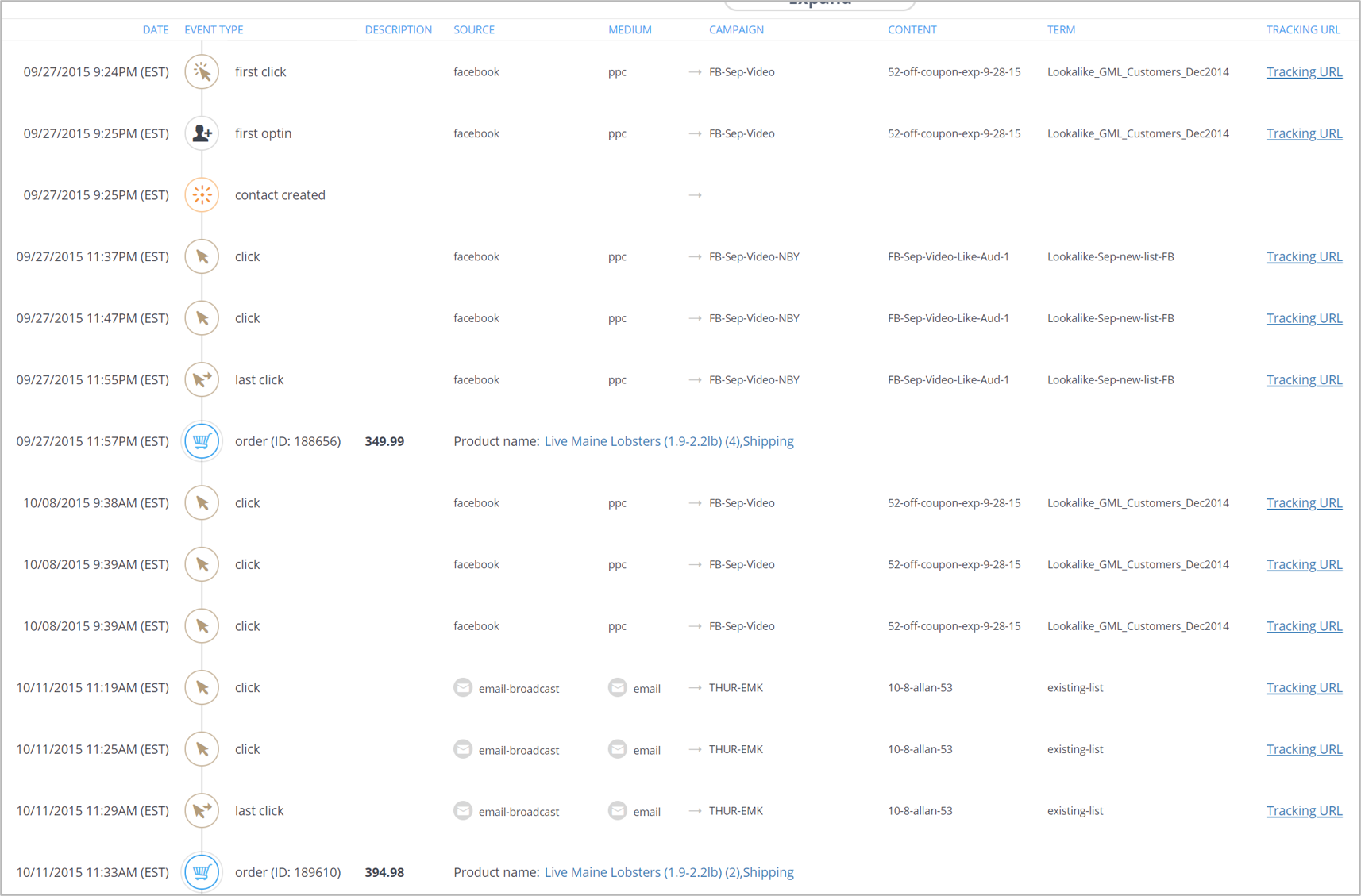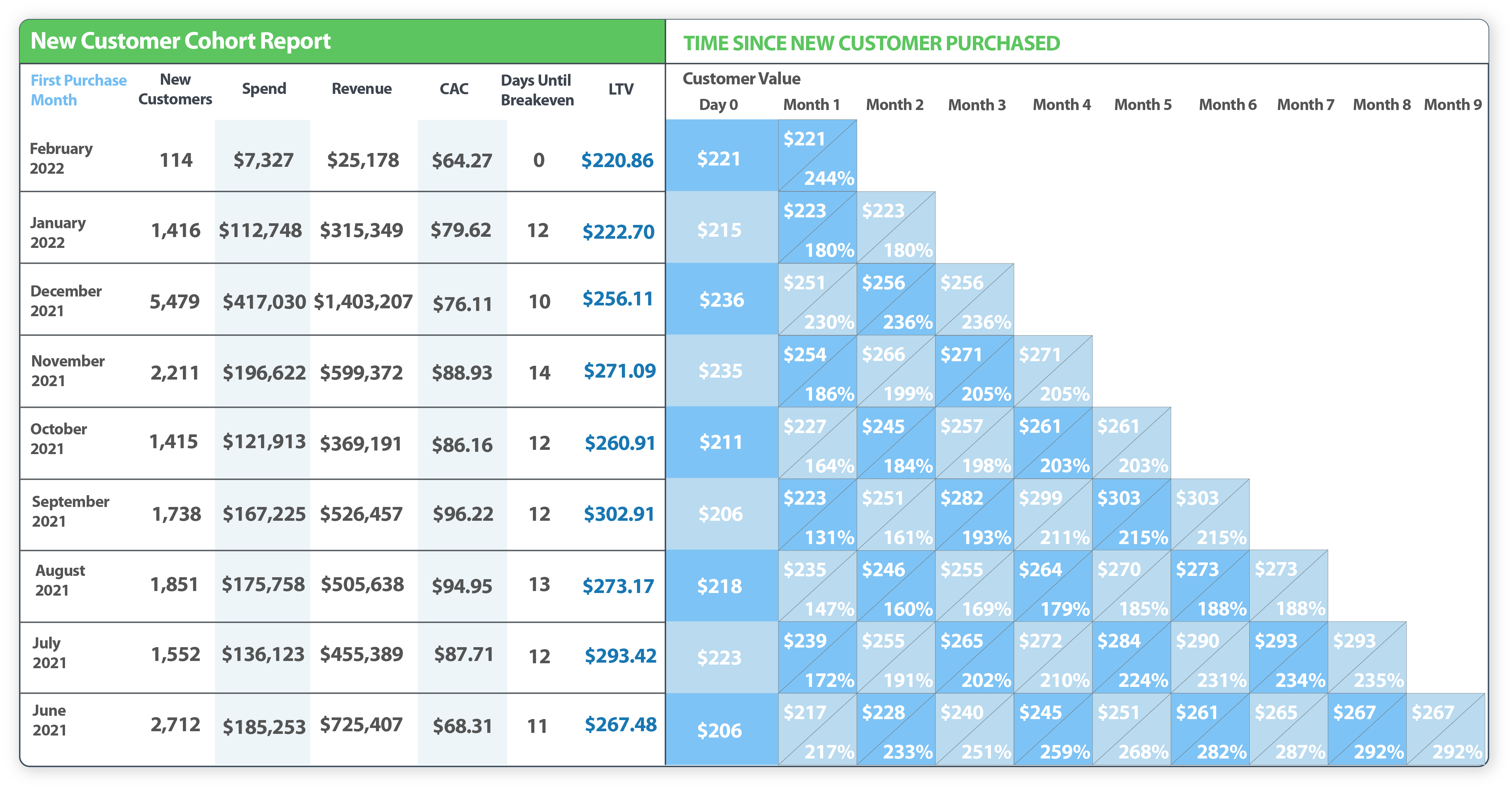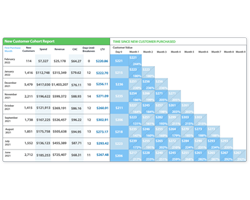Customer Lifetime Value (LTV) is an often overlooked metric for ecommerce companies. That's not a bad thing though because it gives an advantage to brands who are using it properly to optimize cold traffic. Their competitors don't even know what they are missing!
LTV is essentially just the total revenue brought in by a single customer, or the average revenue brought in by all your customers. Tracking LTV is critical for analyzing marketing performance and reducing ad costs.
LTV is informative in not just identifying the number of sales from first time customers (who, let's face it, are expensive) but in how well marketing content is able to retarget and convert repeat customers. Repeat customers are much less expensive and less difficult to convert, so they increase overall ROI from advertising, especially if email remarketing converts well.
How to Calculate Ecommerce Customer Lifetime Value
Customer Lifetime Value is calculated simply by adding up all your revenue for a certain time period and dividing by the number of unique customers.

The challenge with this is: How do you know your total number of unique customers?
 It is not possible to identify the number of unique customers (or new customers) using Google or Facebook Ad Manager. That is because neither platform tracks unique users.
It is not possible to identify the number of unique customers (or new customers) using Google or Facebook Ad Manager. That is because neither platform tracks unique users.
You should be able to track this using your CRM or payment processor, so that is one source you might want to pursue for a 10,000 ft view of your LTV.
The weakness of using your CRM or payment processor is that you won't be able to accurately track user interactions with your paid advertising or other content. Without this information, it's much more difficult to identify what content is bringing in high value customers so you can optimize.
What is a Good LTV?
Customer LTV will vary widely from ecommerce company to ecommerce company. It depends on many factors such as products offered, pricing, whether the business has a subscription products, if there are a lot of repeat buyers, and AOV.
The most important thing when it comes to LTV is tracking for improvements. The higher your LTV, the better ROAS is going to be.
This is because the cost to bring in new customers from cold traffic is much higher than inviting purchases from people who already love your brand. They just need a little reminder about how great your products are.
That's why Wicked Reports uses customer LTV to track each click and interaction individual users have with your brand. You can use this information to see what top of funnel, middle of funnel, and bottom of funnel content is bringing in your highest value customers and enticing them to make a purchase.
Once you know this, it's easy to replicate those customer journeys to bring in more high LTV customers (even from cold traffic!).
Here is an example of an actual Wicked Reports ecommerce client's Customer LTV Report:

You can see, high LTV customers are easy to find and research with this report.
Another powerful customer LTV tool Wicked clients use is our Cohort Reporting. New Customer Cohort reports are especially powerful for seeing whether marketing efforts are resulting on higher LTV customers.
This report breaks new customers into monthly "cohorts" and then tracks the LTV of that cohort over time. It looks like this:

This report allows you to look at each month's ad campaign performance and see which ones have brought in higher value customers.
In this actual ecommerce example, start by looking at June 2021. New customers during that month bought, on average, $206 of product in their first purchase(s) on Day 0. By month 9, those same customers had bought on average $61 more from this lobster selling brand.
Compare that with November 2021. New customers during that month bought $235 on their first day. By month 4, they spent $36 more bringing their average LTV to $271.
Comparing the June 2021 and November 2021 cohort, it can be seen that there was very little increase during the same months (months 7-8 and months 2-3 for November). Nearly all the cohorts saw no increase during that month range which would be January - February.
So now the question is, why haven't there been a lot of repeat sales during this time period? Was this brand spending less on paid advertising, not sending out broadcast emails, or was it a performance issue?
My guess is that this ecommerce company suffers from the typical purchasing downturn after the holiday season. With access to Wicked's Cohort Reporting and Customer LTV Reports, I don't have to guess. I can dig in and find out, even compare against last year's performance during that time period or look at detailed ROI Attribution reports.
It's easy to see how powerful this accurate, multi-touch marketing attribution reporting can be for ecommerce brands. Being able to bring in high LTV customers at the cold traffic level by replicating the journeys of your best existing customers drastically improves ROI.
Why LTV Is The Best Marketing Metric for Ecommerce Brands
There are so many metrics to look at when it comes to tracking marketing performance. CPC, CPL, CAC, and LTV are all classic paid advertising metrics.
We've seen that Customer Lifetime Value is the secret weapon of our most successful ecommerce brand clients. These brands know that CPC, CPL and CAC are all based on tracking one-time purchases and do not focus on high value, repeat customers. That's a critical error!
![]() By tracking ecommerce customer lifetime value and making an effort to understand why it's increasing or decreasing... it is easy to make content improvements to bring in more high value customers, especially at the cold traffic level.
By tracking ecommerce customer lifetime value and making an effort to understand why it's increasing or decreasing... it is easy to make content improvements to bring in more high value customers, especially at the cold traffic level.
This is how scaling revenue with paid advertising becomes easy for ecommerce brands, especially those with subscription products.
Needing less ad spend because you can get more value from customers who love your products, instead of having to convince cold traffic to trust your brand at high expense, drastically improves ROI.
How To Improve Ecommerce Customer Lifetime Value
Increasing LTV is easy when you have accurate attribution data. Wicked Reports clients have a leg up on their competition, because they have access to LTV reporting and Cohort reporting, as well as our detailed ROI Attribution reporting for each level of their marketing funnel.
Here is how to get the biggest improvements in LTV (and therefore ROI):
- Review Cohort Reporting and identify when Day 0 LTV is highest. Dive into what campaigns brought in new customers during that time, and replicate that content.
- Review Cohort Reporting for the biggest month-to-month increased in LTV. Dive into what content made those repeat sales, and replicate that content.
- Reward customer loyalty with coupons and other special offers. It's worth it because those sales are much less expensive than new customers from cold traffic.
If you're looking to use these tools to improve your brand's marketing performance, book a demo with our expert team today so we can show you how accurate marketing attribution, and knowing what to do with it, can make a big impact.





